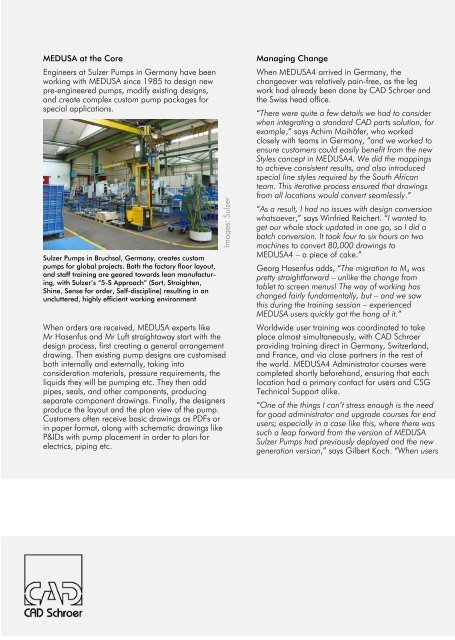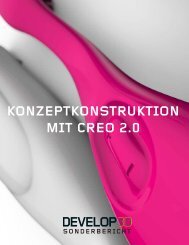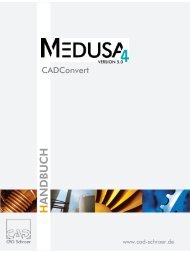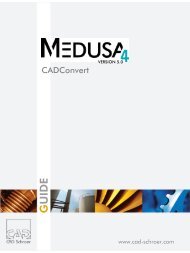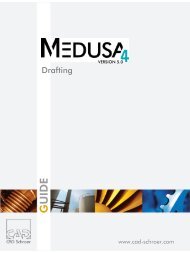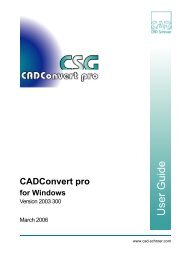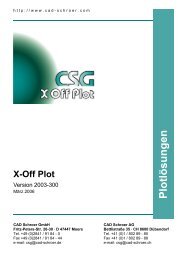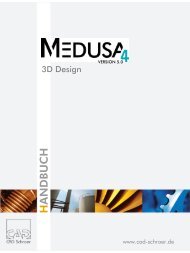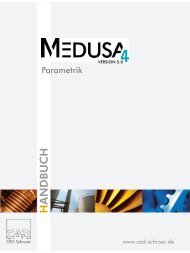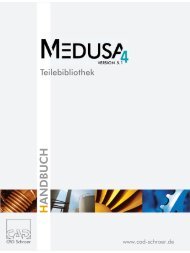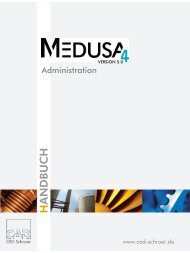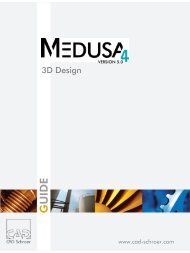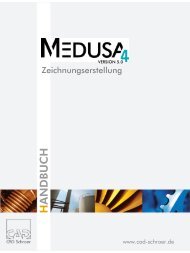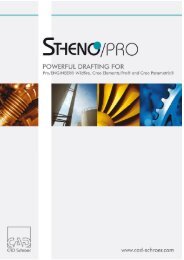Design: Sulzer Pumps - CAD Schroer
Design: Sulzer Pumps - CAD Schroer
Design: Sulzer Pumps - CAD Schroer
You also want an ePaper? Increase the reach of your titles
YUMPU automatically turns print PDFs into web optimized ePapers that Google loves.
MEDUSA at the Core<br />
Engineers at <strong>Sulzer</strong> <strong>Pumps</strong> in Germany have been<br />
working with MEDUSA since 1985 to design new<br />
pre-engineered pumps, modify existing designs,<br />
and create complex custom pump packages for<br />
special applications.<br />
<strong>Sulzer</strong> <strong>Pumps</strong> in Bruchsal, Germany, creates custom<br />
pumps for global projects. Both the factory floor layout,<br />
and staff training are geared towards lean manufacturing,<br />
with <strong>Sulzer</strong>’s “5-S Approach” (Sort, Straighten,<br />
Shine, Sense for order, Self-discipline) resulting in an<br />
uncluttered, highly efficient working environment<br />
When orders are received, MEDUSA experts like<br />
Mr Hasenfus and Mr Luft straightaway start with the<br />
design process, first creating a general arrangement<br />
drawing. Then existing pump designs are customised<br />
both internally and externally, taking into<br />
consideration materials, pressure requirements, the<br />
liquids they will be pumping etc. They then add<br />
pipes, seals, and other components, producing<br />
separate component drawings. Finally, the designers<br />
produce the layout and the plan view of the pump.<br />
Customers often receive basic drawings as PDFs or<br />
in paper format, along with schematic drawings like<br />
P&IDs with pump placement in order to plan for<br />
electrics, piping etc.<br />
Images: <strong>Sulzer</strong><br />
Managing Change<br />
When MEDUSA4 arrived in Germany, the<br />
changeover was relatively pain-free, as the leg<br />
work had already been done by <strong>CAD</strong> <strong>Schroer</strong> and<br />
the Swiss head office.<br />
“There were quite a few details we had to consider<br />
when integrating a standard <strong>CAD</strong> parts solution, for<br />
example,” says Achim Maihöfer, who worked<br />
closely with teams in Germany, “and we worked to<br />
ensure customers could easily benefit from the new<br />
Styles concept in MEDUSA4. We did the mappings<br />
to achieve consistent results, and also introduced<br />
special line styles required by the South African<br />
team. This iterative process ensured that drawings<br />
from all locations would convert seamlessly.”<br />
“As a result, I had no issues with design conversion<br />
whatsoever,” says Winfried Reichert. “I wanted to<br />
get our whole stock updated in one go, so I did a<br />
batch conversion. It took four to six hours on two<br />
machines to convert 80,000 drawings to<br />
MEDUSA4 – a piece of cake.”<br />
Georg Hasenfus adds, “The migration to M4 was<br />
pretty straightforward – unlike the change from<br />
tablet to screen menus! The way of working has<br />
changed fairly fundamentally, but – and we saw<br />
this during the training session – experienced<br />
MEDUSA users quickly got the hang of it.”<br />
Worldwide user training was coordinated to take<br />
place almost simultaneously, with <strong>CAD</strong> <strong>Schroer</strong><br />
providing training direct in Germany, Switzerland,<br />
and France, and via close partners in the rest of<br />
the world. MEDUSA4 Administrator courses were<br />
completed shortly beforehand, ensuring that each<br />
location had a primary contact for users and CSG<br />
Technical Support alike.<br />
“One of the things I can’t stress enough is the need<br />
for good administrator and upgrade courses for end<br />
users; especially in a case like this, where there was<br />
such a leap forward from the version of MEDUSA<br />
<strong>Sulzer</strong> <strong>Pumps</strong> had previously deployed and the new<br />
generation version,” says Gilbert Koch. “When users


